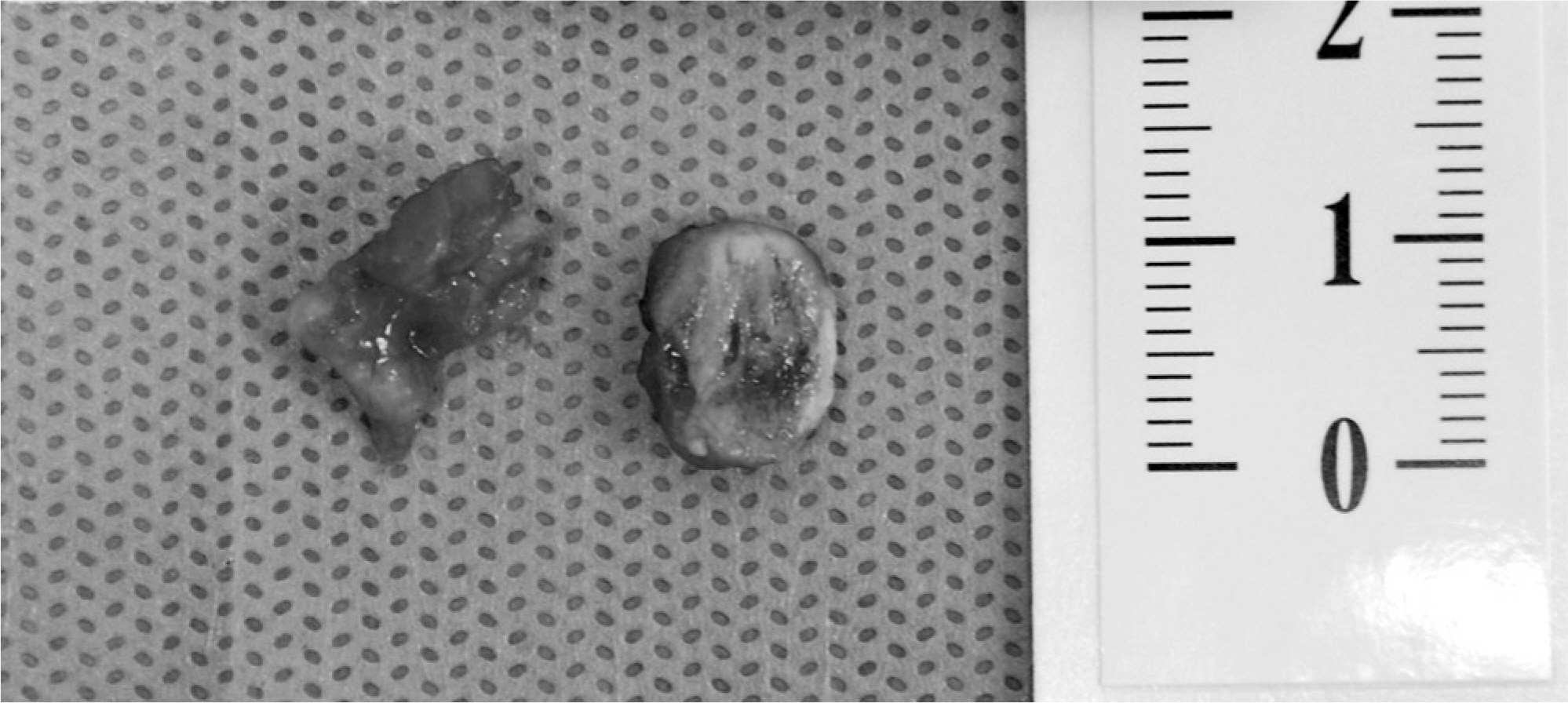J Korean Soc Spine Surg.
2012 Mar;19(1):20-24. 10.4184/jkss.2012.19.1.20.
Myelopathy due to Thoracic Intradural Extramedullary Tumor Misdiagnosed as the Cerebral Infarction: A Case Report
- Affiliations
-
- 1Department of Orthopedic Surgery, Soonchunhyang University Cheonan Hospital, Korea.
- 2Department of Orthopedic Surgery, Soonchunhyang University College of Medicine, Seoul, Korea. schsbj@schmc.ac.kr
- KMID: 2097861
- DOI: http://doi.org/10.4184/jkss.2012.19.1.20
Abstract
- STUDY DESIGN: A Case report.
OBJECTIVES
We report a case of thoracic intradural extramedullary tumor that has been misdiagnosed as the cerebral infarction. SUMMARY OF LITERATURE REVIEW: Spinal meningioma is one of the common spinal tumors. Clinical symptoms were characteristically progressive myelopathy, rather than radiculopathy.
MATERIALS AND METHODS
A 66-year-old female patient who had a history of cerebral infarction admitted as suffering from progressive lower extremities weakness for 6 months. The patient was diagnosed and has been treated as the cerebral infarction at another hospital. However, the patient showed worsening symptoms. In magnetic resonance imaging, an intradural extramedullary space occupying mass compressing the spinal cord, between T8 and T9 level, was shown. By undergoing an operation, resected the mass. In a pathologic report, mass was confirmed to be meningioma.
RESULTS
After the operation, symptoms were improved. The patient was able to walk 2 weeks after surgery.
CONCLUSIONS
We report the correct diagnosis and a successful surgical treatment of myelopathy, due to thoracic myelopathy that has been misdiagnosed as the cerebral infarction in another hospital.
MeSH Terms
Figure
Reference
-
1.Levy WJ Jr., Bay J., Dohn D. Spinal cord meningioma. J Neurosurg. 1982. 57:804–12.
Article2.Souweidance MM., Benjamin V. Spinal cord meningiomas. Neurosurg Clin N Am. 1994. 5:283–91.3.Solero CL., Fornari M., Giombini S, et al. Spinal meningiomas: review of 174 operated cases. Neurosurgery. 1989. 25:153–60.
Article4.Levy WJ., Lanchaw J., Hahn JF., Sawhny B., Bay J., Dohn DF. Spinal Neurofibromas: a report of 66 cases and a comparison with meningiomas. Neurosurgery. 1986. 18:331–4.
Article5.Shin BJ., Lee JC., Yoon TK, et al. Surgical treatment of intradural extramedullary tumor. J Korean Soc Spine Surg. 2002. 9:230–7.6.Stechison MT., Tasker RR., Wortzman G. Spinal meningioma en plaque. Report of two cases. J Neurosurg. 1987. 67:452–5.7.Park SH., Hwang SK., Park YM. Intramedullary clear cell meningioma. Acta Neurochir(Wien). 2006. 148:463–6.
Article8.Chung JY. Spinal Tumor. J Korean Soc Spine Surg. 1999. 6:316–25.
- Full Text Links
- Actions
-
Cited
- CITED
-
- Close
- Share
- Similar articles
-
- Intradural Extramedullary Non-infiltrated Solitary Metastatic Tumor
- Primary Intradural Extramedullary Myxopapillary Ependymoma
- Non-Enhancing Intradural Extramedullary Ependymoma: A Case Report
- Intraspinal Myxoid Chondrosarcoma: Case Report
- Intradural Extramedullary Capillary Hemangioma In the Upper Thoracic Spine with Simultaneous Extensive Arachnoiditis





